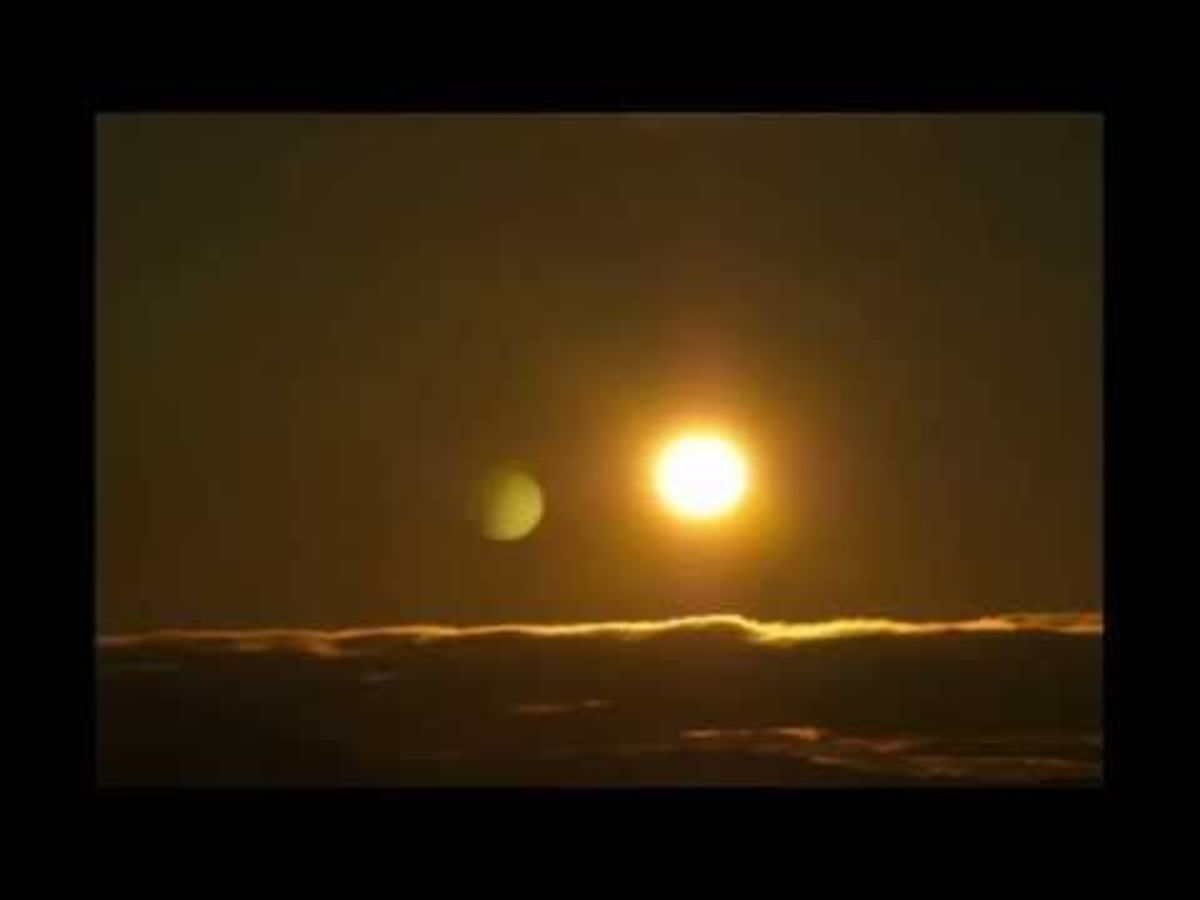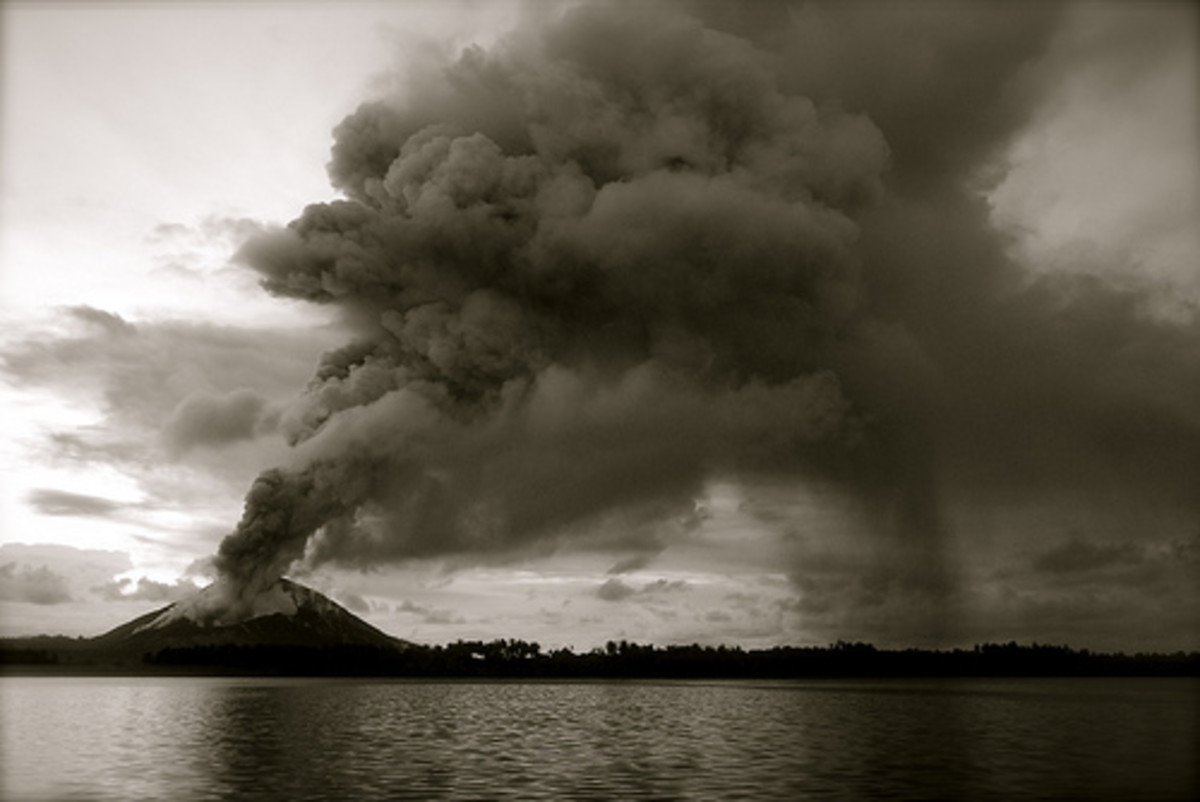Mega-Quake(s) to Finish Filling Global Seismic Time Gap?
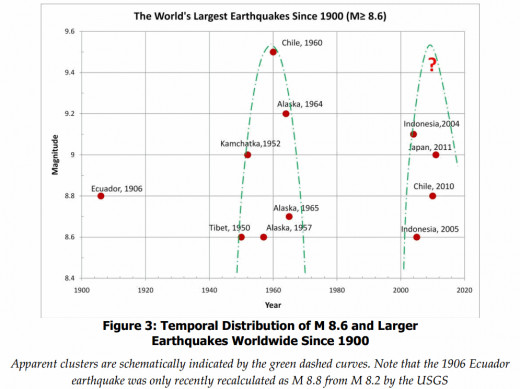
"The statistics of great and giant earthquake occurrences indicate that the historical temporal clustering of these earthquakes on a global scale cannot be attributed to chance. It appears that the giant 2004 Andaman-Nicobar (Sumatra) earthquake began a new cycle of global great earthquake activity. If the current cycle follows the one that occurred in the 1950 - 1965 timeframe, we may be only about half way through the cycle, and the largest earthquake in the current cluster may not have yet occurred..."
-part of the Conclusions published 10/14/11 in Global Earthquake Clustering --Part 1, EQECAT, Inc.
A fellow hubber, Buildreps, recently published a three part series related to plate tectonics and how Antarctica may or may not play a major role in generating much significant earthquake activity towards Australia and north of there ("Antarctica -- Does It Play a Role in Generating Earthquakes?"). During that presentation, the author utilized the global energy release of seismic activity since 1900. In order to produce maps displaying areas of greater or lesser stress, he downloaded the USGS' earthquake catalog and added a column that converted each event magnitude to Joules of energy. In that article he supplied a link to that database which I have used in part to create this hub.
In an earlier article ("A Seismic Trend To Take Seriously"), I presented evidence that during the period of 2004-2013, the global seismic engine was going into overdrive and producing twice as many 8.0 magnitude or larger earthquakes on an average annual basis than occurred in the prior 103 years. In the process of creating that hub, I produced a table giving an intended ideal distribution rate of global earthquakes by magnitude and energy release (within an average month). Thanks to Buildreps efforts, I have been inspired to revisit this area of interest and updated the table, included here with related charts.
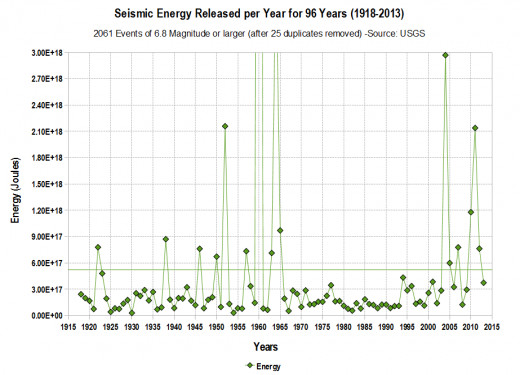
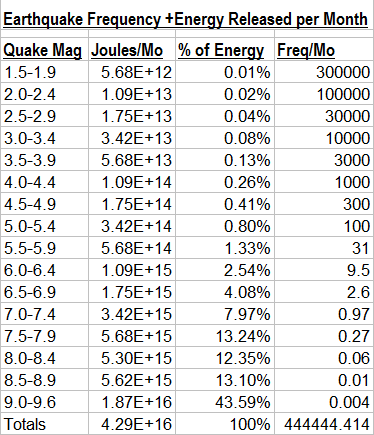
One chart given here was created following a suggestion by the same hubber that I produce my own chart to take the place of the one used from another internet source that was included at the end of my earlier article (linked to above) which we both concur was not accurate.
Some of the highlights of the updated information is that even though 7.0 magnitude or larger earthquakes occur 16 times per year on average, they are responsible for releasing 90% of all seismic energy. The approximately 150,000 earthquakes from 2.0 to 6.9 magnitude occurring beneath that level account for almost all of the remaining 10%. If we focus on the great quakes or those of 8.0 magnitude or greater, we find that, even though they occur only one or two times per year (the current average), they produce approximately 70% of all global seismic energy released.
This also plays into what I tried to demonstrate in my last hub entitled "Most Earthquakes Unpredictable" where I showed from the data how only the largest earthquakes of 6.8 magnitude or greater appeared to parallel related astrological aspects (falling within an astro-aspect window) significantly more often than the many tens of thousands of smaller ones (the latter showing only average results). In other words, the non-energetic earthquakes, which represent the vast majority of all seismic events, carry no weight statistically and should be excluded from any analysis when trying to prove the validity of any astrological predictive mechanism. They simply represent static that would distort or drown out any statistical significance if they were to be included in any scientific analysis.
In a publication that I found on the net (the source of the opening quote used at the top of this hub), a graphic was included that I feel perfectly demonstrates what this hub is mostly about. As shown at the opening of this hub, 8.6 magnitude or larger earthquakes have clustered two times during the pasts 114 years. The first time it happened was from 1950-1965. The next time is now. We are presently in the middle of a global storm of great earthquakes. To get a better idea of just how significant the present time is, if you were to look at the number of 8.6 magnitude or larger earthquakes that have occurred during the ten year period of 2004-2013 (5 events) and compare it to the number that happened in the 90 years before that (9 events) it can be deduced that they happened five times more frequently during this recent 10 year stretch (the 8.6 magnitude Sumatra earthquake of 2012 hadn't occurred yet when the graphic at the top of this hub was created).
Also related to this are the following two charts, produced from the table shown earlier. I was at first disappointed that the curve seemed flawed or deviated from an ideal curve, but then realized that this was evidence of a seismic time gap for great earthquakes. It implies that we are due for several large earthquakes in the decades to come. I believe that at least two of these will occur within the next six years. However, if this cluster period turns out to be longer than the last one, at least one such quake may wait till the next solar minimum (at least 7 years away) before occurring (the following abstract touches on this correlation: http://adsabs.harvard.edu/abs/2007AGUFM.S33C1473S ). The earthquakes I am expecting should number two or three in the 8.7-8.9 magnitude range and/or one or two earthquakes in the 9.2-9.4 magnitude range.
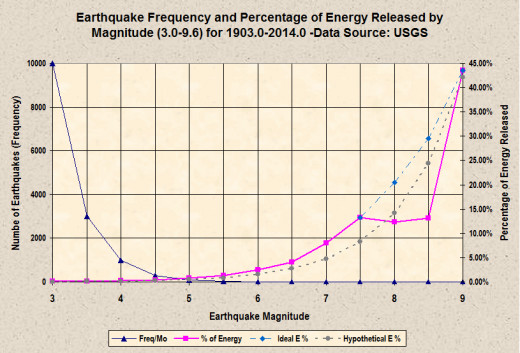
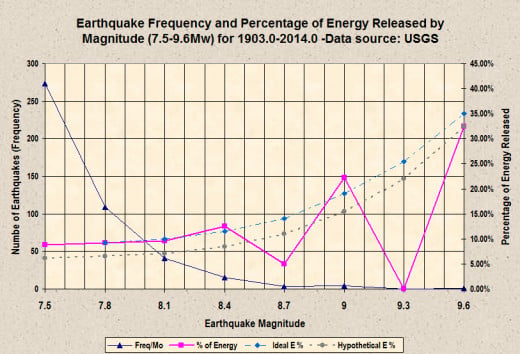
One possible area for one of these earthquakes is in the United States following a total solar eclipse in August 2017. If such a large quake does occur, it would more likely be in the 8.7-8.9 magnitude range. One key feature of this eclipse is that, not only does its shadow travel across the US, but it also falls over areas of historical noteworthy quakes such as the northern portion of Oregon (near the epicenter of the mega-quake of January 1700), Missouri (near the epicenters of the New Madrid earthquakes of 1811-1812, which also followed an eclipse that passed nearby), and South Carolina (not far from the epicenter of the 1886 earthquake).
Statistically, just about anywhere else along the ring of fire probably has a better chance of producing quakes of this size. For example, the nature of the fault system from San Francisco to Los Angeles is capable of producing an earthquake of no larger than 8.6 (don't tell that to the makers of a disaster movie to come out in the near future related to a future 9.0 magnitude quake in this same area). However, the Pacific Northwest (where I happen to reside) is more than able to be the scene of an 8.7 magnitude or larger event. I am not sure that it is ready to snap just yet though. Statistically it would be more likely no earlier than 90 years from now, but it is not impossible for it to happen in a few years either.
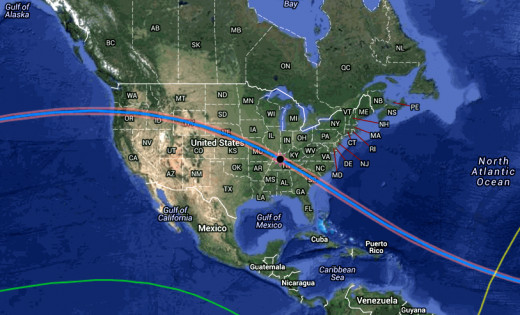
© 2014 Joseph Ritrovato



